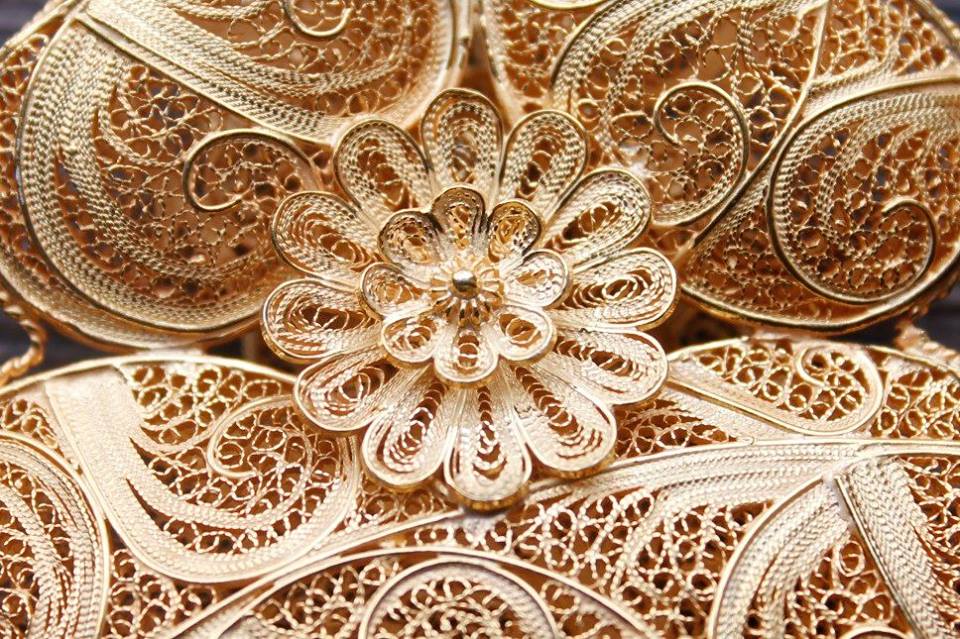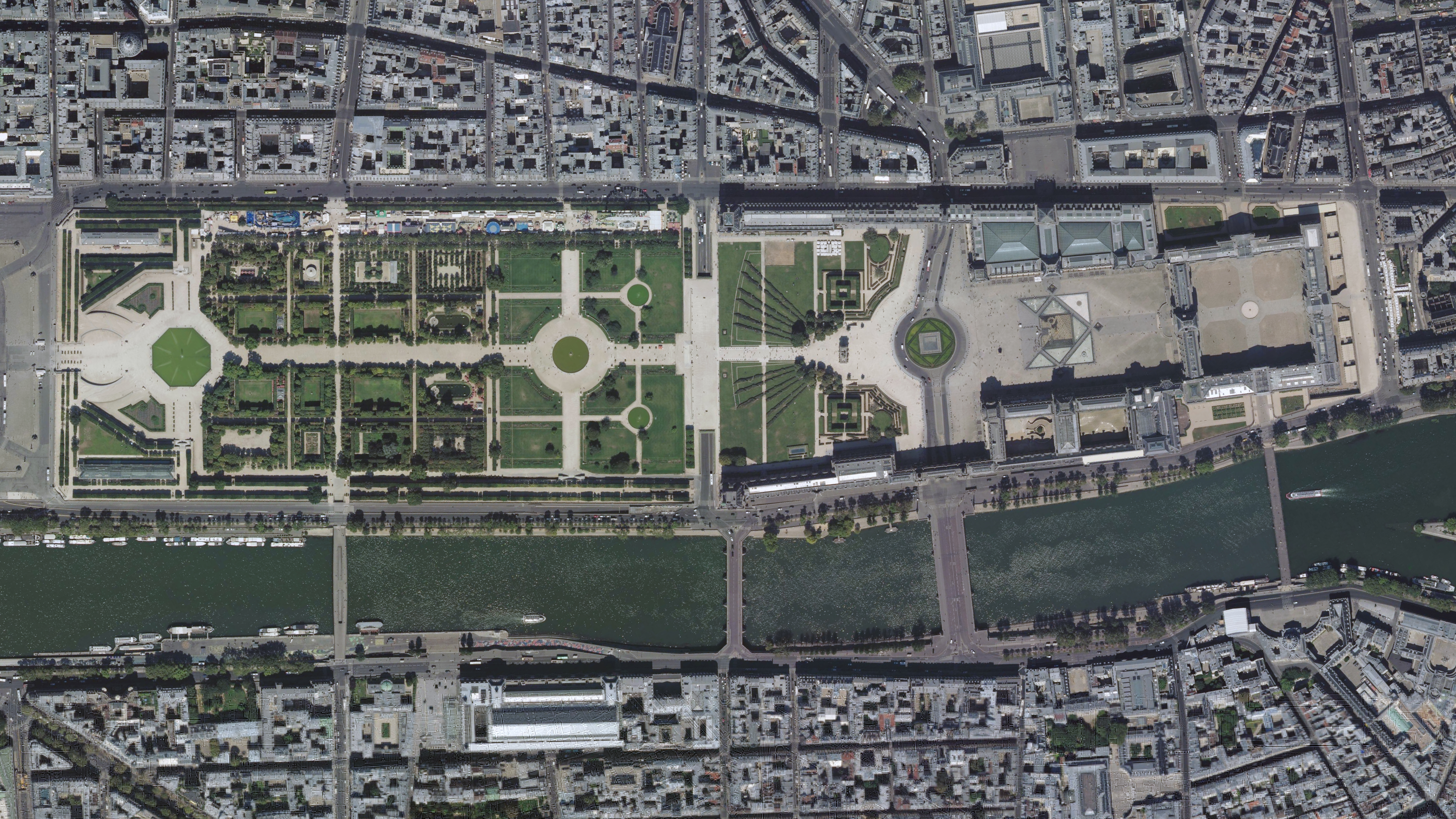|
Filigree
Filigree (also less commonly spelled ''filagree'', and formerly written ''filigrann'' or ''filigrene'') is a form of intricate metalwork used in jewellery and other small forms of metalwork. In jewellery, it is usually of gold and silver, made with tiny beads or twisted threads, or both in combination, soldered together or to the surface of an object of the same metal and arranged in artistic motifs. It often suggests lace and remains popular in Indian and other Asian metalwork. It was popular as well in Italian, French and Portuguese metalwork from 1660 to the late 19th century. It should not be confused with ajoure jewellery work, the ajoure technique consisting of drilling holes in objects made of sheet metal. The English word filigree is shortened from the earlier use of ''filigreen'' which derives from Latin meaning thread and grain, in the sense of small bead. The Latin words gave ''filigrana'' in Italian which itself became ''filigrane'' in 17th-century Frenc ... [...More Info...] [...Related Items...] OR: [Wikipedia] [Google] [Baidu] |
Midyat Filigree Museum
Midyat Filigree Museum () is an art museum in Midyat, Mardin Province, southeastern Turkey, exhibiting handcrafted silver filigree (). Opened in late 2023, it is owned and operated by the local municipality. Overview The museum is located in the Ulus St. of Akçakaya neighborhood in Midyat district of Mardin Province, southeastern Turkey. It is situated in a 1850-built house of Assyrian Gelle Hirmız family, which was donated to the Municipality of Midyat. The museum was established by the local municipality, and opened to the public on 10 December 2023. In the museum, handcrafted silver filigree artwork from the Roman Empire, Byzantine Empire, ottoman Empire periods and the Republican era are on display. There is a workshop inside the museum, where visitors can observe the silversmithing, and also participate in handcrafting. The museum offers filigree artwork for sale to the visitors. History The art of silversmithing in the region goes back to around three millemium B. ... [...More Info...] [...Related Items...] OR: [Wikipedia] [Google] [Baidu] |
Midyat
Midyat (, , , ) is a municipality and district of Mardin Province, Turkey. Its area is 1,241 km2, and its population is 120,069 (2022). In the modern era, the town is populated by Kurds, Mhallami Arabs and Assyrians. The old Estel neighborhood is about 80 to 85% Kurdish-populated. it was originally a Syriac Christian town made up of mostly Syriac Orthodox, Catholics, and Protestants. The spoken language of Midyat was until recently modern Aramaic (Surayt) and the town has throughout history been considered the capital of the Tur Abdin region, the heartland of Syriac Christianity. History Assyrian tablets from 9th century BC refer to Midyat as '' Matiate''. During a campaign in 879 BC, the Assyrian king Assurnasirpal II and his army marched through the city, staying for two nights. His successor, the Assyrian king Shalmaneser III did the same in 845 BC. The tablets also described how Assurnasirpal II erected a monument in the city, which remains to be found. The archae ... [...More Info...] [...Related Items...] OR: [Wikipedia] [Google] [Baidu] |
Ajouré
Ajouré or à jour (French for "to the day," meaning open to the daylight) is an openwork metalworking technique similar to filigree, which leaves open spaces in the worked metal. Unlike filigree, the holes are usually sawed or pierced through solid metal rather than being incorporated during the process of construction. This technique also differs from plique-à-jour enamelling in that the open spaces are not filled with enamel, but left open. The result is reminiscent of the style of lace also known as à jour or cutwork. À jour work is often used in jewellery making to enhance gemstones by letting light shine through the back of the stone. This stonesetting technique became popular around 1800 A.D. and is commonly seen in Art Deco pieces. See also *Openwork *Plique-à-jour ''Plique-à-jour'' (French for "letting in daylight") is a vitreous enamelling technique where the enamel is applied in cells, similar to cloisonné, but with no backing in the final product, so light ... [...More Info...] [...Related Items...] OR: [Wikipedia] [Google] [Baidu] |
Jewellery
Jewellery (or jewelry in American English) consists of decorative items worn for personal adornment such as brooches, ring (jewellery), rings, necklaces, earrings, pendants, bracelets, and cufflinks. Jewellery may be attached to the body or the clothes. From a western perspective, the term is restricted to durable Ornament (art), ornaments, excluding flowers for example. For many centuries metal such as gold often combined with gemstones, has been the normal material for jewellery, but other materials such as glass, shells and other plant materials may be used. Jewellery is one of the oldest types of archaeological artefact – with 100,000-year-old beads made from ''Nassarius'' shells thought to be the oldest known jewellery. The basic forms of jewellery vary between cultures but are often extremely long-lived; in European cultures the most common forms of jewellery listed above have persisted since ancient times, while other forms such as adornments for the nose or ankle, impo ... [...More Info...] [...Related Items...] OR: [Wikipedia] [Google] [Baidu] |
Portuguese Filigree Intricate Work
Portuguese may refer to: * anything of, from, or related to the country and nation of Portugal ** Portuguese cuisine, traditional foods ** Portuguese language, a Romance language *** Portuguese dialects, variants of the Portuguese language ** Portuguese man o' war, a dangerous marine animal ** Portuguese people, an ethnic group See also * * ''Sonnets from the Portuguese'' * "A Portuguesa", the national anthem of Portugal * Lusofonia * Lusitania Lusitania (; ) was an ancient Iberian Roman province encompassing most of modern-day Portugal (south of the Douro River) and a large portion of western Spain (the present Extremadura and Province of Salamanca). Romans named the region after th ... * {{disambiguation Language and nationality disambiguation pages ... [...More Info...] [...Related Items...] OR: [Wikipedia] [Google] [Baidu] |
India
India, officially the Republic of India, is a country in South Asia. It is the List of countries and dependencies by area, seventh-largest country by area; the List of countries by population (United Nations), most populous country since 2023; and, since its independence in 1947, the world's most populous democracy. Bounded by the Indian Ocean on the south, the Arabian Sea on the southwest, and the Bay of Bengal on the southeast, it shares land borders with Pakistan to the west; China, Nepal, and Bhutan to the north; and Bangladesh and Myanmar to the east. In the Indian Ocean, India is near Sri Lanka and the Maldives; its Andaman and Nicobar Islands share a maritime border with Thailand, Myanmar, and Indonesia. Modern humans arrived on the Indian subcontinent from Africa no later than 55,000 years ago., "Y-Chromosome and Mt-DNA data support the colonization of South Asia by modern humans originating in Africa. ... Coalescence dates for most non-European populations averag ... [...More Info...] [...Related Items...] OR: [Wikipedia] [Google] [Baidu] |
Trichinopoly
Tiruchirappalli (), also known as Trichy, is a major tier II city in the Indian state of Tamil Nadu and the administrative headquarters of Tiruchirappalli district. The city is credited with being the best livable and the cleanest city of Tamil Nadu, as well as the fifth safest city for women in India. It is the fourth largest city as well as the fourth largest urban agglomeration in the state. Located south of Chennai and north of Kanyakumari, Tiruchirappalli sits almost at the geographic centre of Tamil Nadu. The Cauvery Delta begins west of the city where the Kaveri river splits into two, forming the island of Srirangam which is now incorporated into the Tiruchirappalli City Municipal Corporation. The city occupies an area of and had a population of 916,857 in 2011. Tiruchirappalli's recorded history begins under Chola rule in the 3rd century BC. The city has also been ruled by the Pallavas, Pandyas, Vijayanagar Empire, Nayak Dynasty, the Carnatic state and t ... [...More Info...] [...Related Items...] OR: [Wikipedia] [Google] [Baidu] |
Phoenicia
Phoenicians were an Ancient Semitic-speaking peoples, ancient Semitic group of people who lived in the Phoenician city-states along a coastal strip in the Levant region of the eastern Mediterranean, primarily modern Lebanon and the Syria, Syrian coast. They developed a Maritime history, maritime civilization which expanded and contracted throughout history, with the core of their culture stretching from Arwad in modern Syria to Mount Carmel. The Phoenicians extended their cultural influence through trade and colonization throughout the Mediterranean, from Cyprus to the Iberian Peninsula, evidenced by thousands of Canaanite and Aramaic inscriptions, Phoenician inscriptions. The Phoenicians directly succeeded the Bronze Age Canaanites, continuing their cultural traditions after the decline of most major Mediterranean basin cultures in the Late Bronze Age collapse and into the Iron Age without interruption. They called themselves Canaanites and referred to their land as Canaan, but ... [...More Info...] [...Related Items...] OR: [Wikipedia] [Google] [Baidu] |
Sardinia
Sardinia ( ; ; ) is the Mediterranean islands#By area, second-largest island in the Mediterranean Sea, after Sicily, and one of the Regions of Italy, twenty regions of Italy. It is located west of the Italian Peninsula, north of Tunisia and 16.45 km south of the French island of Corsica. It has over 1.5 million inhabitants as of 2025. It is one of the five Italian regions with some degree of Autonomous administrative division, domestic autonomy being granted by a Regions of Italy#Autonomous regions with special statute, special statute. Its official name, Autonomous Region of Sardinia, is bilingual in Italian language, Italian and Sardinian language, Sardinian: / . It is divided into four provinces of Italy, provinces and a Metropolitan cities of Italy, metropolitan city. Its capital (and largest city) is Cagliari. Sardinia's indigenous language and Algherese dialect, Algherese Catalan language, Catalan are referred to by both the regional and national law as two of ... [...More Info...] [...Related Items...] OR: [Wikipedia] [Google] [Baidu] |
Cyprus
Cyprus (), officially the Republic of Cyprus, is an island country in the eastern Mediterranean Sea. Situated in West Asia, its cultural identity and geopolitical orientation are overwhelmingly Southeast European. Cyprus is the List of islands in the Mediterranean, third largest and third most populous island in the Mediterranean, after Sicily and Sardinia. It is located southeast of Greece, south of Turkey, west of Syria and Lebanon, northwest of Israel and Palestine, and north of Egypt. Its capital and largest city is Nicosia. Cyprus hosts the British Overseas Territories, British military bases Akrotiri and Dhekelia, whilst the northeast portion of the island is ''de facto'' governed by the self-declared Northern Cyprus, Turkish Republic of Northern Cyprus, which is separated from the Republic of Cyprus by the United Nations Buffer Zone in Cyprus, United Nations Buffer Zone. Cyprus was first settled by hunter-gatherers around 13,000 years ago, with farming communities em ... [...More Info...] [...Related Items...] OR: [Wikipedia] [Google] [Baidu] |
Louvre
The Louvre ( ), or the Louvre Museum ( ), is a national art museum in Paris, France, and one of the most famous museums in the world. It is located on the Rive Droite, Right Bank of the Seine in the city's 1st arrondissement of Paris, 1st arrondissement (district or ward) and home to some of the most Western canon, canonical works of Art of Europe, Western art, including the ''Mona Lisa,'' ''Venus de Milo,'' and ''Winged Victory''. The museum is housed in the Louvre Palace, originally built in the late 12th to 13th century under Philip II of France, Philip II. Remnants of the Medieval Louvre fortress are visible in the basement of the museum. Due to urban expansion, the fortress eventually lost its defensive function, and in 1546 Francis I of France, Francis I converted it into the primary residence of the French kings. The building was redesigned and extended many times to form the present Louvre Palace. In 1682, Louis XIV chose the Palace of Versailles for his househ ... [...More Info...] [...Related Items...] OR: [Wikipedia] [Google] [Baidu] |



